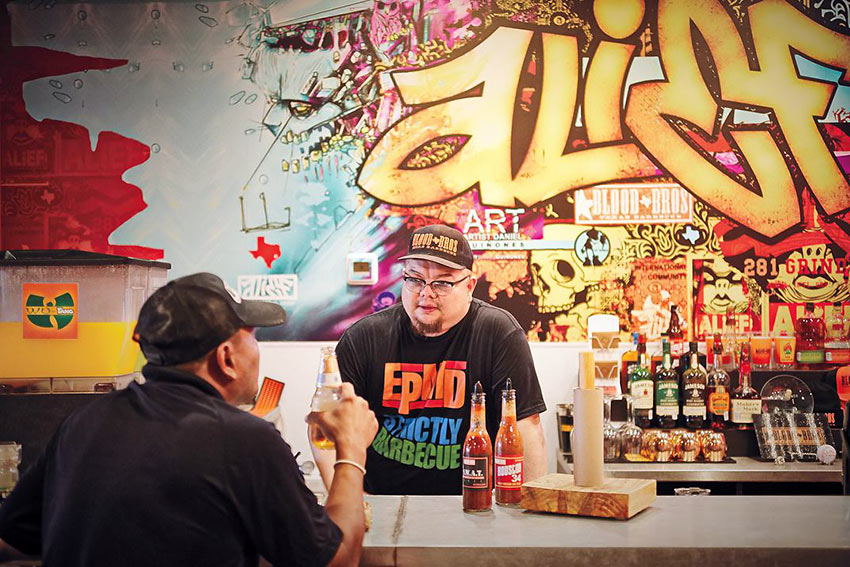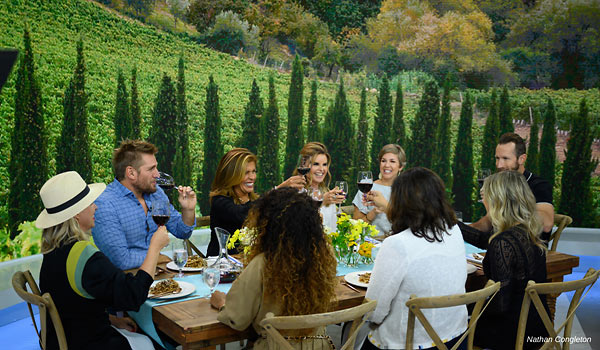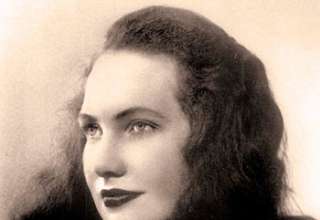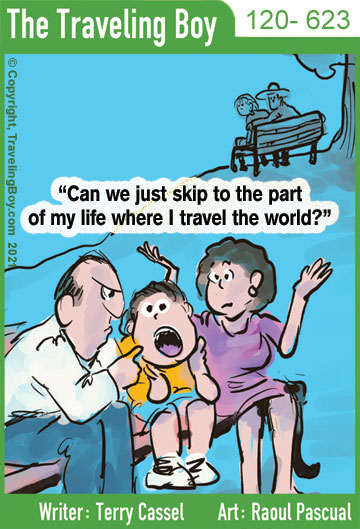10 Ways to Get a Better Night of Sleep

With a few simple guidelines, you can have better sleep tonight. At some point in our lives, for any number of reasons, nearly all of us will have difficulties sleeping and suffer from acute insomnia. This can lead to significant distress but have no fear. There are simple steps to take that will help you sleep better tonight.
Get Up and Go to Bed at the Same Time Every Day
Aim to get up and go to bed at the same time every day, even on weekends. We are creatures of habit, and our sleep is no exception. Once you determine your sleep needs, you should do your best to meet those needs every day. By consistently going to bed and getting up at the same time, we condition our body to follow a regular pattern of sleep. This allows our body’s natural clock, called a circadian rhythm, to help initiate and maintain our sleep.
Create a Comfortable Sleep Environment
Make sure your sleep environment is quiet, dark, cool, and comfortable. Studies find that sleeping in a cool environment is most conducive to sleep. By eliminating excess noise and light, we can minimize the disruptions that might wake us up. In addition, the bedroom should be a place for relaxing — not a source of stress.
Use Your Room for Sleep Only
Bedrooms are for sleeping and sex, not for watching television, indulging your pets, or doing work. Somehow, we have managed to make the bedroom a multipurpose room. All electronics must be removed. Televisions, gaming systems, computers, telephones, and various other gadgets are stimulating and disruptive to sleep. Don’t allow them in your bedroom and don’t use them in the brief period before going to bed. Even the small amount of light from a computer screen in the evening hours can stimulate your brain into thinking it is time to be awake. It’s also important to remove your pets from the bedroom as they can disrupt your sleep. Lastly, don’t use the bedroom as a place to work, as these activities are likewise stimulating and will disrupt your sleep.
Watch What You Consume in the Evening
Avoid caffeine, alcohol, and nicotine 4 to 6 hours before bedtime. Caffeine can be found in expected places like coffee, soda pop, or tea, but also in unexpected foods like chocolate. As a stimulant, it will keep you awake, even if used nearly six hours before bed. Likewise, nicotine will disrupt your sleep. And contrary to common practice, an alcoholic “nightcap” can actually make your sleep worse. Though it may cause you to become drowsy, alcohol fragments the stages of your sleep and makes it more disrupted.
Don’t Nap
Skip the nap. The period of time that you are awake adds to something called “sleep drive.” The longer we stay awake, the more we want to go to sleep. By taking a nap, we can relieve this desire to sleep — but we’ll also have a harder time getting to sleep later. Adults should have a consolidated period of sleep at night without additional naps. If there is excessive daytime sleepiness and desire to nap, in spite of adequate sleep time, this might suggest a sleep disorder warranting further evaluation.
Exercise — But at the Right Time
Try to exercise every day, but avoid doing so 4 hours before bedtime. Staying active and physically fit is an excellent way to ensure a good night’s sleep. However, exercising too close to bedtime may actually cause difficulties in getting to sleep, as your body will still be revved up.
Develop Sleep Rituals
Develop sleep rituals, which include quiet activities such as reading, 15 minutes before bedtime. Just as we maintain for children, adults need daily sleep rituals prior to going to bed to allow us to unwind and mentally prepare for going to sleep. These rituals should include quiet activities such as reading, listening to relaxing music, or even taking a nice, hot bath.
Don’t Struggle to Sleep in Bed
If you’re having trouble getting to sleep, as occurs with insomnia, don’t lie awake, struggling in bed — your body may start to think it’s a place for difficulties. Individuals who have difficulty initiating sleep often toss and turn in bed, trying to force sleep to come. If this happens night after night, you may begin to associate your bed with the anxiety of not being able to sleep. If you’re unable to get to sleep within 15 minutes of going to bed, go to another quiet place and lie down until you feel ready to fall asleep, then return to your bedroom to sleep.
Avoid Things That Can Ruin Sleep
There are many things that can ruin your sleep, and you should avoid eating or drinking in the few hours right before going to bed, as these might lead to disruptions of your sleep. Discomfort with heartburn or acid reflux, as well as needing to get up multiple times to urinate, can be very disruptive to a good night’s sleep. It’s best to avoid these situations by not eating or drinking in the few hours prior to bedtime.
Make Sleep a Priority
Don’t sacrifice sleep to do daytime activities. The most important advice is to respect that your body needs to sleep. Too often, we allow our sleep time to be infringed upon when our daytime obligations take longer than anticipated. Additionally, opportunities to engage in pleasurable activities — visiting friends, watching television, playing on the internet, eating out, and any number of others — quickly cut into our sleep time if we allow them to. It’s important to schedule your sleep time and stick to that schedule, no matter what might come up during the day.
Go Swimming in the Brazilian Desert in These Lagoons That Appear Like Magic Every Year
Courtesy Cailey Rizzo, Travel & Leisure

Nobody can put on an event quite like nature.
Every year, the sand dunes at Lençóis Maranhenses National Park in Brazil collect rainwater from about January to June. And come July, these dunes become temporary pools full of clear, warm water.
Until about September, these pop-up pools become a unique seasonal attraction. It’s almost as if nature made pop-up pools of clear, warm water for visitors. The water has been recorded up to 87 degrees Fahrenheit, providing a relaxing experience for anyone who made the voyage.
Getting to the pools takes some effort. To get to the park, visitors must take a jeep, one of the only vehicles capable of handling the bumpy terrain.
The park recommends making the journey only with an experienced guide as Lençóis Maranhenses National Park is almost 600 square miles — and it’s easy to get lost.
Once visitors reach the pop-up pools, they should be aware that they probably won’t be the only ones swimming. In Portuguese, Lençóis Maranhenses, translates as “bedsheets of Maranhão.”
When the lagoons are formed for the season, all sorts of animals crawl out of the bedsheets. The wolffish spends the dry season dormant, buried far below the sand in still-damp mud. But after rainy season, the wolffish will emerge in the pools, as will other fish who reach the lagoons through connected riverways.
Come October, winds whip through the park and — much like the art at Burning Man — the pools disappear without any trace, only to reemerge the following season.
How Three Guys From Houston Are Cooking Up a Revolution in Texas Barbecue
A tiny suburban eatery is breaking all the rules to create some of the freshest-tasting grub on the horizon
By Brett Martin; Photograph by Jody Horton
I wish I could tell you that the “blood” in Blood Bros BBQ was literal. That sometime in the mid-1980s, three Asian-American friends in suburban Houston met under the bleachers of their high school football stadium and performed some kind of ritual with a drawn blade in which they swore eternal fealty in smoke and flesh. Sadly, no knife, no blood.

This is a different kind of tale: a great American story about the great American food. The brother part is real, anyway. Terry Wong and his younger-by-18-months sibling, Robin, make up two-thirds of the Blood Bros, whose year-old restaurant has made waves in the world of Texas barbecue. The third, honorary Bro is Quy Hoang, who has the distinction of being the first Vietnamese-American to work as a pit master in Houston, a city with no shortage of either.
Blood Bros BBQ is located in a strip mall in the Houston suburb of Bellaire. The location should come as no surprise: After years of the so-called Great Inversion — in which affluent professionals flocked back to city centers, leaving the suburbs to recently arrived immigrants — we should all be accustomed to finding the most exciting developments in food happening amid pawnshops and nail salons and urgent care centers.
Blood Bros occupies a storefront that was most recently a Smoothie King. The Bros spent $400,000, mostly borrowed from family and friends, and transformed it into a shining example of the modern barbecue aesthetic: No grinning pigs eating each other or themselves. No faux-Southern signage. No groan-inducing puns. Just a cool rectangular space with smooth wooden banquettes (built by the Wongs’ stepfather) and warmly glowing orange walls.
But the visual centerpiece of the space is on the wall behind the bar. It’s a mural, painted by the local artist Daniel Quinones, with graffiti-style letters at its center spelling “Alief.” The Blood Bros grew up in that suburb (pronounced A-leaf) 15 miles southwest of Houston, going to schools where the kids spoke as many as 70 different languages. In spite of all that diversity — or because of it — Alief has a fiercely unifying sense of hometown pride. “You’ll meet somebody you really get along with and then find out they’re from Alief,” says Hoang, “and it’s like, ‘Oh yeah, now it makes sense.’”
One Monday, when the restaurant is closed, we pile into Hoang’s 2006 Dodge Charger, whose color is strikingly similar to the restaurant’s walls. The partners are all wearing Blood Bros baseball caps, in different combinations of colors. Black and white for Hoang, 46, who is wiry, heavily tattooed and wearing dark-rimmed glasses. Black with orange for Robin, 44, the younger and more serious Wong. Sky blue for Terry, also 46, who is big and genial, with a sleepy expression exacerbated by the prosthetic he wears after losing his right eye to a mysterious infection a little over a year ago. The hat complements the design on Terry’s shirt, an oil derrick made up of the letters FYHA, short for “ F— You, Houston’s Awesome.”
The car sails down the Westpark Tollway, rumbling like a single-engine plane. Soon a water tower painted with the name Alief comes into view. “All this was still fields when we were kids,” says Terry.
The story of Alief is in many ways the story of modern Houston. Founded in 1895, Alief remained a sleepy town of rice farms, gravel roads and largely German immigrants deep into the 20th century. That changed in a hurry starting in the early 1970s, as Houston’s population began to spread beyond the city limits. By the 1980s, the population of Alief had swelled to over 130,000. It had also been transformed from majority white to a kaleidoscope of black, Hispanic and Asian communities.
The physical manifestation of all that growth awaits as we pull off the highway: a sprawling high school campus as large as many community colleges. There are, in fact, two high schools across the street from each other, each large enough to include several different wings. They share a stadium that looks newer and flashier than some professional arenas. “You’re in Texas, man,” says Terry. “We take football serious.”
Hoang and the Wongs attended Elsik High, rather than its cross-street rival, Hastings, but effectively the two schools formed one massive crucible of youthful energy. “You can imagine what it was like at 3:30 p.m. every afternoon when the bell rang and 8,000 kids spilled out onto the street,” Hoang says.
The Blood Bros met in the midst of that scrum. Hoang was born in Vietnam and came with his parents to the States at 18 months old, making stops in Louisiana and Maryland before settling in Texas. The Wongs are third-generation Chinese-Americans whose grandfather immigrated from Guangzhou in 1926, stopping in Birmingham, Alabama, and Knoxville, Tennessee, where he opened a laundry, before making his way to Houston in the early 1960s. As boys, the Bros bonded over skateboards and bikes, hip-hop and a shared love of the camp classic Big Trouble in Little China. (“Pork Chop Express,” the name of Kurt Russell’s truck in that film, was an early contender for the name of their barbecue restaurant; Hoang has the truck’s logo tattooed on his forearm.)
The friends drifted apart after high school. Hoang joined his uncle in a business selling and maintaining high-end aquariums. The Wongs opened Glitter Karaoke, a bar in Chinatown that became a cultural meeting point. “Back then, Cantonese karaoke places would only do Chinese karaoke. Vietnamese places would only do Vietnamese. American would only do American,” says Robin. “We’re ABC” — American Born Chinese — “so we could enjoy all of it.”
In 2010, the brothers decided to move Glitter to Midtown, where it quickly became a favorite after-hours hangout for Houston’s chefs. By then, the Wongs had reconnected with Hoang, who had developed a reputation as a stellar home griller. He began hosting pop-ups outside Glitter and experimenting with barbecue techniques. Eventually one of the Wongs heard about an old barrel smoker for sale for $1,500. They offered to split the cost with Hoang, to see what he came up with. “And that was it,” says Robin. “If we hadn’t bought that smoker, who knows what we’d be doing.”
Hoang proved a quick study with the classic items known as the Texas Trinity. That’s brisket, sausage and ribs, though the term implies an equality that doesn’t exist: Brisket is forever king. He also started experimenting with creations like beef belly burnt ends glazed with Korean gochujang chili paste and ricey links of boudin sausage laced with Thai curry. In Houstonia magazine, J.C. Reid, who would go on to be the Houston Chronicle’s barbecue columnist (a real job), praised “Hoang’s creativity, which isn’t hampered by preconceived notions of what barbecue should be.” After several years, the men thought about turning their hobby into a real business.
It’s a common narrative in barbecue, this passage from amateurism to entrepreneurship. Barbecue is a deep craft, but a narrow one. The barriers to entry are low; the equipment and ingredients relatively inexpensive. Given sufficient obsession and effort, excellence is within reach.
Also, the Blood Bros quickly learned, nearly everybody likes to eat it.
Blood Bros opened its brick-and-mortar doors last December, on a morning when the temperature may have read in the high 50s, but the damp Gulf wind whipping across the Bellaire parking lot made it feel much colder. By 10 a.m., an hour before opening, there was already a small band of hungry barbecue hounds taking shelter in the recessed entryway. Those who arrived after that had no such recourse, as the line stretched out along the sidewalk.
Lining up in inclement weather is part of barbecue culture, though more often the inclemency is of the blazingly hot variety—which forges a kind of bond with the pit masters, holding their lonely vigil over the flames. The line at Franklin Barbeque in Austin, ground zero of the modern barbecue boom, is legendary, a veritable tailgate party that has become as much a part of the experience as the transcendent brisket that is its ostensible goal.
You line up because scarcity is built into the barbecue equation: A pit master can only produce so much each day without compromising quality. A closing time at a barbecue joint is a bad sign. The magic words instead are “Until Sold Out.” That December day, Blood Bros was out of food by 1:30 p.m., and its daily close has hovered at 2:30 p.m., at the latest, ever since. Daniel Vaughn, the barbecue editor of Texas Monthly (also a real job), recently named Blood Bros to his quadrennial list of Top 25 New Barbeque Joints in Texas, which, along with his overall Top 50, has become a kind of Way of the Pilgrim for serious barbecue fans.
“For three bozos who know nothing about running a restaurant, we’re doing pretty well,” says Hoang.
The question of what makes great barbecue is controversial and territorial, with styles of sauce and preparation differing wildly from, say, eastern North Carolina to western North Carolina, let alone from state to state. What we think of as Texas barbecue is a product of Central Texas. When Franklin Barbeque opened in 2009, it ushered in an era of “urban barbecue,” bringing chef-driven creativity and nerdy science to what had generally been a rough-hewn folk tradition. In the decade since, Texas barbecue has become the dominant style from Minneapolis to Minsk.
Houston may be only a few hours down the road from Austin, but it too received the modern Central Texas style as an outside influence. Indeed, J.C. Reid says, the city was slow to adopt it, largely because Houstonians are passionate about their own, porkier, saucier and largely African-American barbecue tradition. A year or so ago, Reid took me on a tour of Space City’s smoky evolution. We began at Ray’s Real Pit BBQ Shack, in the historically black Third Ward — meaty pork ribs; links of boudin stuffed with pepper-laden rice; sticky, gelatinous smoked oxtails. From there, it was on to the Pit Room, where brisket tacos came with smoked meat piled high atop soft, irregular-shaped flour tortillas made with rendered beef fat. Then, 90 minutes north to the rural-feeling suburb of Tomball to visit Tejas Chocolate+Barbecue, where we shared a massive beef rib encrusted in a sheath of pastrami peppercorns and spice. Tejas was co-founded by Scott Moore, a fifth-generation Texan who once sold parts for freight trains and taught himself barbecue because it seemed, quite reasonably, like a better way to spend one’s days.
“I am a Google graduate,” he said proudly, an explanation echoed almost word for word when I later asked Kaiser Lashkari, the Pakistani-born chef and owner of the legendary restaurant Himalaya, in Houston’s Mahatma Gandhi District, how he learned to make his brisket, which arrived under a blanket of thick, rust-hued and fragrant tikka masala.
All of this is to say that the Blood Bros’ journey, and their expansion of the classic barbecue menu, is entirely in keeping with the cuisine’s recent trajectory. In some instances — as with the Mexican-inspired rise of smoked meat tacos — the outside influences have already grown so commonplace as to be nearly invisible.
On our tour of Alief, we stopped in a Vietnamese restaurant that had once been a high school hangout for the Blood Bros. Hoang ordered in Vietnamese, and the table soon filled with steaming dishes. One was banh bot chien, a plate-sized omelet topped with crispy rice cakes and fried scallions and a thin, pungent soy sauce.
“We should do a special like this,” said Terry.
“We could smoke the egg. Make it like a quiche,” said Hoang.
“Or like a pizza,” added Robin.
“Something to experiment with,” said Hoang, almost to himself. “Always an experiment…”
Still, it’s notable that on Blood Bros’ opening day last December, its menu was all but indistinguishable from that of any other modern Texas barbecue joint. The Bros say that was a deliberate decision. “We didn’t want to get niched,” Hoang explains. “We don’t want it to be ‘Oh, those are the Asian guys.’ We wanted to do the Trinity so well that nobody could say anything about it.”
It’s a debate among the three: Just how “Asian” do they want their barbecue to be? The Bros’ breakthroughs have been a source of great pride in the Vietnamese and Chinese communities. They have been asked to cater an annual gathering for the Asian Pacific American Advocates, an influential national organization. Customers routinely ask for selfies and autographs.
On a practical level, too, one thing about the barbecue boom is that it has produced an awful lot of barbecue—three other restaurants within two blocks of Blood Bros, just for starters. Pit masters of every ethnicity and background must always be on the lookout for variations that will make them stand out in a crowded field.
Still, Robin says, “We don’t want to be a novelty.” They have added their distinctively Asian items slowly. A sensational Vietnamese banh mi — stuffed with pickled vegetables, chicken liver pâté and Hoang’s smoked turkey breast. That loamy, tingling Thai green curry boudin, which is a profound tribute to both Southeast Asia and Cajun Country. A frequent special of fried rice made with leftover nuggets of smoky brisket. “It’s not really Chinese. It’s not Vietnamese. It’s just fried rice,” says Robin.
Customers often approach the Blood Bros, boasting that they can detect lemongrass or Sichuan peppercorn or Chinese five-spice powder in Hoang’s barbecue rub. (It consists simply of salt, pepper and cayenne.) Or they’ll swear up and down that there is sriracha in the house barbecue sauce. (There isn’t.) “I’m like, ‘I don’t know what’s going on with your palate, but there’s none of that in there,’” says Robin. “What you’re tasting is your preconceived notions.”
And what could be more American, after all, than all of these negotiations — between what makes you the same and what sets you apart, between what your community expects and what your heart desires, between the self of your birth and the self of the world you grew up in. Barbecue, to say it again, is great American food. It is also great immigrant food. But of course, that is exactly the same thing.
About the Author: Brett Martin is a correspondent for GQ. Read more articles from Brett Martin
About the Author: Jody Horton is a photographer based in Austin, Texas. Read more articles from Jody Horton
I’ve Been Thinking…
By Maria Shriver
At the recent Democratic debate, the final question posed to the candidates was one about friendship.

CNN’s Anderson Cooper asked each of them to describe a friendship they’ve had with someone who has different beliefs than them. The question came in light of what I wrote about last week, which was the uproar over comedian Ellen DeGeneres sitting next to former President George W. Bush at a Dallas Cowboys game. Lots of people seemed to be upset by the debate question, but I found it revelatory in terms of how the candidates answered it and how they didn’t.
Having the question come up in a presidential debate at all tells us that there is a prevailing feeling of fear in our country. There is a fear that people don’t want to be, or are too scared to be, friends with people who have different beliefs than them.
I happen to have a friend who is a Trump supporter. We don’t agree on politics, but I enjoy our friendship. My friend is kind, fun, works hard, loves his family, and has a deep life of faith. I can’t really tell you more about him because he doesn’t want anyone to know who he is. He’s genuinely afraid of losing his job.
I thought about him the other night as Anderson Cooper asked that question. I also thought about the many other people I know who support different ways of thinking, but who don’t want to talk politics these days or go home for the holidays because they fear any discussion will end up in a heated dispute.
In fact, a new survey by Ancestry finds that 81 percent of people reported tip-toeing around uncomfortable topics like politics at their holiday gatherings. Nearly half said they have skipped at least one family gathering altogether due to uncomfortable situations in the past. I find those statistics upsetting, and I think we can all do our part to lessen the tension that seems to be all around us.
Learning how to talk without fighting is an art form. Learning how to constructively disagree with someone you care about and still keep your friendship and/or relationship intact requires patience. It requires love, acceptance, humor, and the ability to allow others to be who they are, or think what they want, and love them anyway.
I remember when I started dating my kids’ dad and my family — all staunch Democrats — learned that he was a Republican. I thought they were going to pass out. In fact, pretty much everyone I knew thought I’d lost my mind. “What is there to even talk about?” they moaned. “Won’t you just be arguing all the time?”
But I knew it would be okay because I was raised by parents who believed in accepting and working with people who held different political and religious beliefs. They wanted people to come to the table with different life experiences so they could learn from them and expand their thinking. Both of them were successful at creating programs and passing legislation that impacted millions of people. They were able to do so because they worked across the aisle to forge friendships based on love of family, love of country, and the fundamental desire to do all they could to improve the lives of others.
That has also been our nation’s history. Ronald Reagan had a great friendship with Democratic speaker Tip O’Neill and it enabled them both to get real stuff done. My uncle Sen. Ted Kennedy was friends with Sen. John McCain, Sen. Orin Hatch and Presidents George H.W. and George W. Bush. Former S.C. Rep. Trey Gowdy wrote this week about his friendship with political opponent Rep. Elijah Cummings, D-MD, who passed away on Thursday. Their friendship helped people from both parties.
Abraham Lincoln built a cabinet with people who tried to defeat him as well. There are examples of other politicians who have done the same. I served as a Democratic First Lady in a Republican administration, but we found common ground on many issues because we sought to promote people over party. If you ask me, I’d love to see one of the Democratic presidential candidates forge a public friendship with someone like Gov. John Kasich, Gov. Mitt Romney, or Gov. Charlie Baker — all Republicans who have served, and are serving, their country.
Why isn’t this a good idea? Wouldn’t we all benefit? Of course, we would.
Don’t we all want success dealing with our climate crisis, our health care crisis, and the challenges facing our economy? We cannot get there alone. We cannot get there without the other party. It’s one reason why I became an Independent a few years ago. I didn’t believe the left or the right had all the answers, and I wanted to open my heart and my mind to hearing the perspectives and ideas coming from both.
In my work in the Alzheimer’s space, I don’t think I’ve ever once asked a doctor or researcher who they voted for. Instead, we talk about the need for more NIH funding. We talk about the gender research gap in medicine. We talk about the millions of people who are going broke as they struggle to provide care for a loved one. We put our heads and our hearts together to talk about what can be, and what we need to do to get there.
So, yes, at my family table — which almost always includes friends as well — we talk about politics. We don’t all have the same views, but we are all facing similar things in life and have plenty to share and learn from each other about that. We also talk about relationships, kids, sports, health, loneliness, finding one’s purpose, and what we are each trying to do to make the world just a little bit better.
The fact is, I don’t want to sit at a table with only people who think the same as I do. I won’t learn anything new that way.
I want my nameless friend who supports Trump to feel accepted in my home. I like pushing back on him, and I think he likes pushing back on me. And I want all my friends who support other candidates to feel accepted, seen, heard, and respected. As the matriarch of my home, I tell my kids that I want to be challenged. I want my mind to expand. Most importantly, I want my heart to grow. Closed thinking leads to closed hearts, and I believe that closed hearts are a danger to us all.
During the debate this week, Mayor Pete Buttigieg said that he thinks we are going to be more divided after this election than we were going into it. I hope he’s wrong, but I fear he’s right. That’s why I’m going to try and do my part to make sure that’s not the case.
It’s one reason why we started The Sunday Paper Dinner Club in this newsletter. Each week, we share a “Meaningful Conversation Starter” and a recipe because we want to inspire people to come together, have meaningful conversations, and find common ground. I’m happy that many people have picked up the mantle and are doing just that across this country. I hope we can build a movement that inspires us all to do this at our dinner table week after week. This is why I’m going to be working with Ancestry to try and turn those numbers from their survey around and encourage people to build the skills and the courage they need to have meaningful conversations, not heated ones.
Moving forward, I’m going to push myself to seek out those who have different political opinions than I do. I’m going to continue to work on how well I listen when I’m in conversation. I’m going to hold myself to a higher standard when my views get challenged.
When I feel myself getting triggered or angry, I’m going to imagine my best self and how she would react. I’m going to pause and let her lead the conversation forward. I’m not going to let it get personal. Instead, I’m going to try to find one piece of common ground with every person I enter into conversation with.
And lastly, but perhaps most importantly, I’m going to push myself to love more openly, more fully, and more courageously. I’m going to ask those who disagree with me to do the same.
In fact, I’m going to start every conversation with someone across the aisle by stating my hope that we end the conversation as friends, and that our friendship become a force for good in our world today. Won’t you join me?
Newly Discovered Treasures Came From the Same Sunken Ship That Carried the Controversial ‘Elgin Marbles’
The “Mentor,” a vessel owned by the notorious Lord Elgin, sank in 1802 while carrying panels and sculptures looted from the Parthenon
Courtesy Jason Daley, smithsonian.com
In September 1802, the H.M.S. Mentor sank off the coast of Avlemonas, Greece, sending 17 crates of antiquities tumbling to the bottom of the Mediterranean. More than 200 years later, the Greek Ministry of Culture reports, marine archaeologists tasked with exploring the wreck have recovered gold jewelry, cooking pots, chess pieces and an array of other artifacts connected with the trove.
As Caroline Goldstein reports for artnet News, Scottish nobleman Thomas Bruce, 7th Earl of Elgin, commissioned the Mentor to transport artifacts removed from the Parthenon, the Acropolis and other Greek heritage sites to his home country of Great Britain. Elgin, who was then serving as the British Ambassador to the Ottoman Empire, is a controversial figure accused by many — including the Greek government — of looting valuable artifacts from the city of Athens during the first decade of the 1800s.
According to Goldstein, the Mentor sank en route to the island of Malta, where it was set to dock before traveling further afield. All 12 passengers and crew members survived the wreck, but the valuable cargo stored onboard was lost—at least initially.
Elgin recovered the majority of artifacts lost in the accident over the course of several salvage missions. Chief among these items were the so-called Parthenon Marbles, a group of sculptures now housed at the British Museum in London and known colloquially as the Elgin Marbles.
Per Seeker’s Rossella Lornenzi, researchers have long suspected that additional artifacts remain trapped in the sunken ship. Since 2009, underwater archaeologists have conducted annual excavations at the site in hopes of locating antiquities overlooked by Elgin’s salvagers.
Previous research expeditions have yielded personal artifacts owned by the ship’s passengers and crew (including toothbrushes, chess pieces and combs), fragments of Egyptian sculptures, and ancient shipping jars called amphorae. This year’s finds include a gold ring, gold earrings, a piece of cookware and wooden pulleys.
The newly discovered artifacts are the property of the Greek government, but the status of the better-known Elgin Marbles remains a point of contention, with both Great Britain and Greece staking a claim to the friezes.
At the turn of the 19th century, Athens was a city of some 10,000 residents under the control of the Ottoman Empire. According to History Extra, Elgin had a letter of instruction allowing him to remove artifacts from the city “as a personal gesture after he encouraged the British forces in their fight to drive the French out of Egypt, which was then an Ottoman possession,” but the legality of this document is now contested.
Ultimately, the nobleman and his agents left the Parthenon with 247 feet of its original 524 feet of sculpted frieze, 15 of 92 metopes (or sculpted panels), and 17 figures taken from their pediments. The massive project bankrupted Elgin, and in 1816, he sold the collection to the British government for much less money than he had once expected.
Writing for the Journal of Art Crime in 2016, scholar Izidor Janzekovic pointed out that even Elgin’s contemporaries considered his actions controversial. Although the Scottish lord supposedly received permission to excavate the Parthenon, many antiquities enthusiasts at the time objected to the move, as the ancient temple was in poor shape and likely to be further damaged by additional work.
As Mary Beard writes for the BBC, Elgin’s motives remain in dispute. Some suggest he sought the marbles mainly to burnish his family’s reputation and perhaps decorate their ancestral home; others believe he was genuinely dedicated to saving at-risk antiquities.
The debate over the marbles has simmered between the two nations for decades, and in 2009, Greece opened a museum near the Parthenon with spots reserved for the missing sections. More recently, the country has proposed a temporary swap with the British Museum to mark the 200th anniversary of the beginning of the Greek War for Independence. Come 2021, the Observer’s Helena Smith reports, Greece has offered to exchange several artifacts never previously allowed to leave the country in exchange for a temporary loan of the marbles.
In response, a British Museum spokesperson said, “From our perspective we’re very happy to consider any loan request.”
Still, she added, “It’s hard to say anything beyond that.”






















